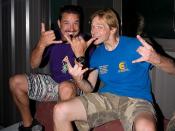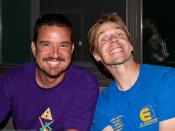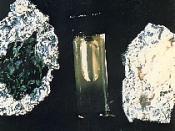The Dawn of a New Age
April, 1956 : The pharmaceutical company Parke & Davis first synthesize what they
believe to be the perfect anesthetic (Souza, 1995). When administered to patients, it causes a
completely dissociative state, with no significant respiratory or cardiovascular depression.
Patients appear to be awake, eyes open, breathing normally.but are unaware of their
surroundings or the procedures being performed upon them (Souza, 1995). Indeed, this is the
perfect drug. Unfortunately, like all good things, this one has a darker side. 15% of patients
awake from their slumber with what appeared to be an acute case of paranoid schizophrenia
(Peterson; Stillman, 1978). The drug is PCP, and to this day it is the scourge of the
underground drug community, and the focal point of intense scientific research. Parke Davis and
Company did not know how terrible, and wonderful, a discovery they made that day; but our
world has been changed forever because of it.quite
possibly for the better.
The Dust of Angels
Phencyclidine, more commonly known as PCP, is a polycyclic compound belonging to
the arylcyclohexylamine class of chemicals [figure 1.0] (Souza 1993). In pure form, it is a white
powder which readily dissolves in water. The cyclohexamines are known for their the potent
neurological effects, with PCP being the most potent. Almost every variation has been
administered to, or abused by, humans at some time (Nintey Fifth Congress, 1978). All these
compounds have similar pharmacological effects, which vary considerably according to the
amount administered. Small doses produce a `drunken' state, in which subjects report a
numbness in the extremities, while some species (like dogs and cats) become quite excited
(Halberstadt, 1995). Intermediate doses have anesthetic and analgesic effects , with the psychic
state resembling sensory isolation with one important exception: the sensory impulses (when
tested electrophysiologically)...



Very informative
Thank you for this article. This wasn't the subject I was looking for but I'm glad that I read it. Very well written.
0 out of 0 people found this comment useful.